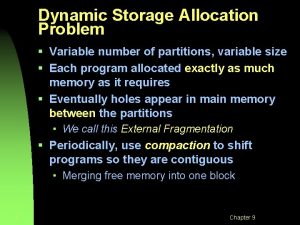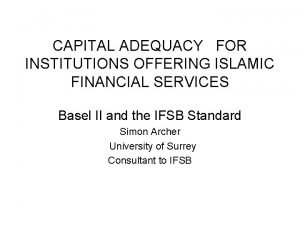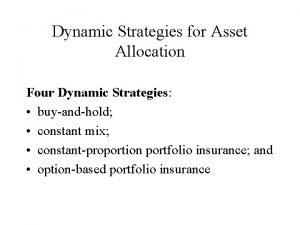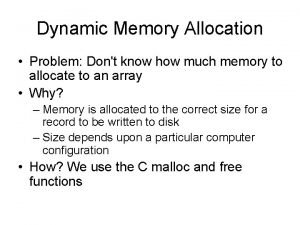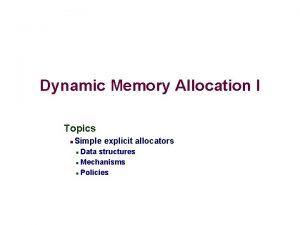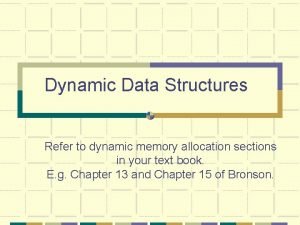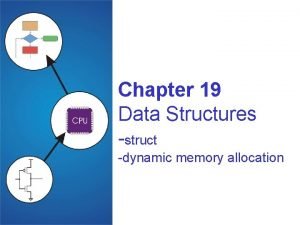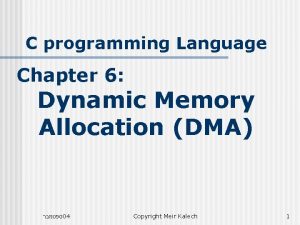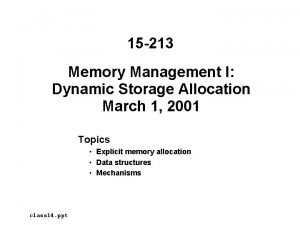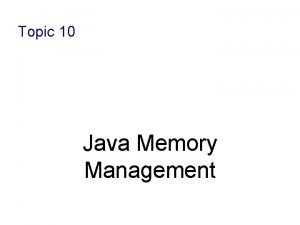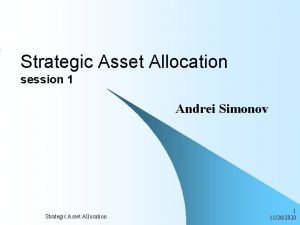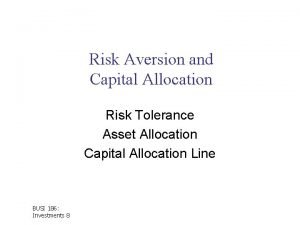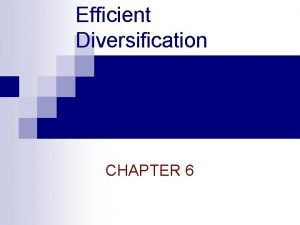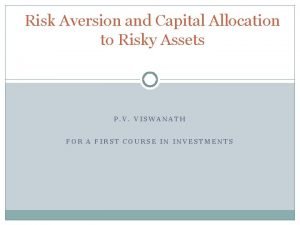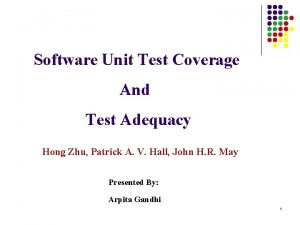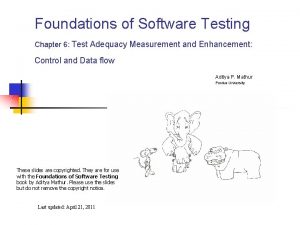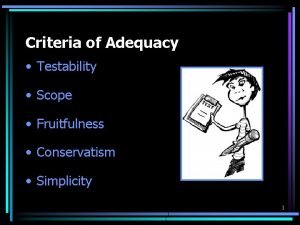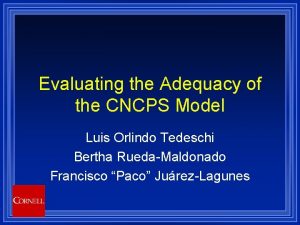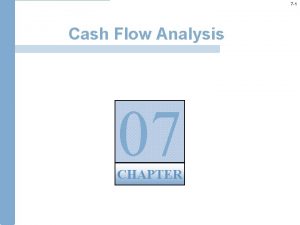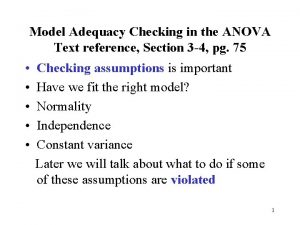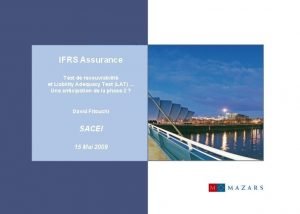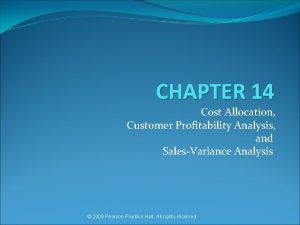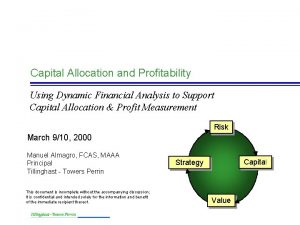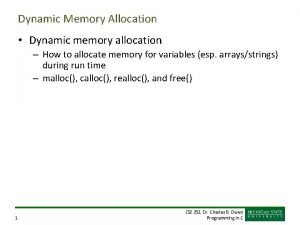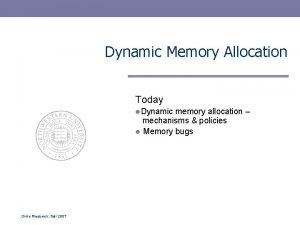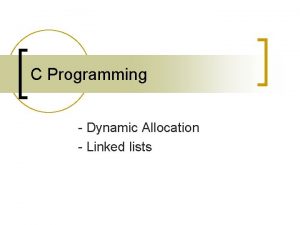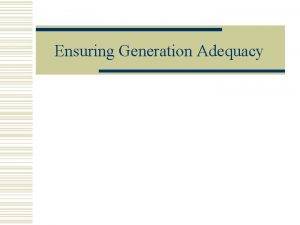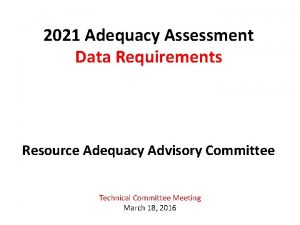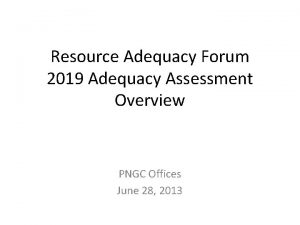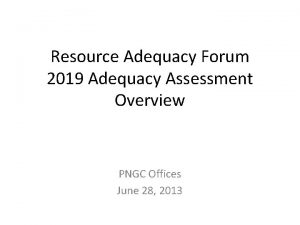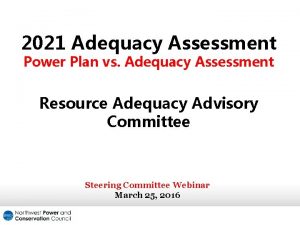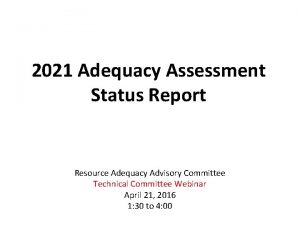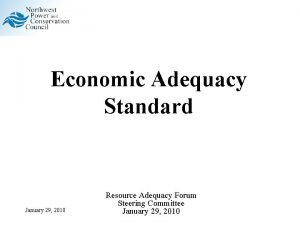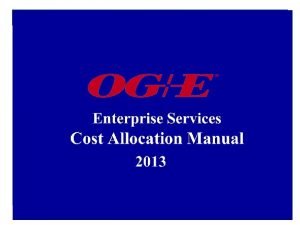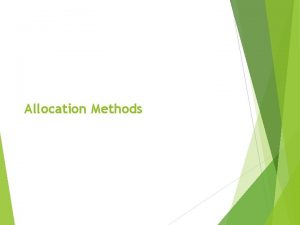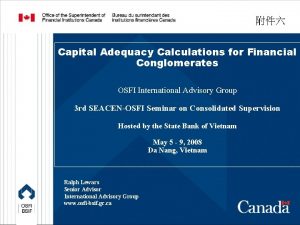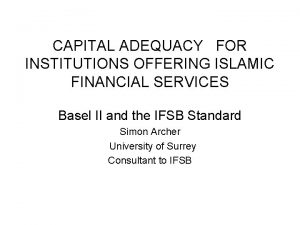Capital Adequacy and Allocation Using Dynamic Financial Analysis









































- Slides: 41

Capital Adequacy and Allocation Using Dynamic Financial Analysis Don Mango - American Re John Mulvey - Princeton University

Overview l l l l Risk Measures and Required Capital Allocation Initial Board Presentation Follow-Up Meetings The Reference Binder Conclusions Q&A 1/11/2022 2

Risk Measures and Required Capital

So Many Open Issues. . . l l No consensus definition of “Required Capital” Which risk measure is best? â Probability l of Ruin What is the right level for that best risk measure? â 1% ? 0. 4% ? 0. 1% ? â Over what time horizon? 1/11/2022 4

So Many Open Issues. . . l l This issue is not limited to insurance Value-at-Risk (Va. R) in securities firms â What time horizon? (30 day) â What probability level? (95%) â Varies firm to firm l l Rating agencies are not sure We need consensus without collusion 1/11/2022 5

Alternative Risk Measures l l Probability of Ruin Variance/Std Dev of Surplus Expected Policyholder Deficit Expected Default Loss Rate on Surplus 1/11/2022 6

Probability of Ruin l Advantages Easy to explain â Easy to calculate â Support from regulators/rating agencies â Translates well to capital market framework (somewhat like Va. R) â 1/11/2022 l Disadvantages Binary measure â Ignores “gradations of solvency” (Philbrick) â Associates “risk” with a single point â Marginal impacts can be misstated â 7

Variance/Std Dev of Surplus l Advantages Well known statistical parameters â Translate well to capital market framework (from CAPM) â Variation captured in a single number â 1/11/2022 l Disadvantages Similar to Probability of Ruin â No distinction made between upside and downside â 8

Expected Policyholder Deficit (EPD) l Advantages Reflects the whole tail of the distribution rather than a single point â Rating Agency support (AM Best BCAR has ties to EPD) â Regulatory support (RBC - Butsic) â 1/11/2022 l Disadvantages More difficult to explain and calculate â Expected loss may not be an appropriate base for required capital calculation â Difficult capital market parallel (“Conditional Va. R”) â 9

Expected Default Loss Rate of Surplus l Advantages Reflects the whole tail of the distribution rather than a single point â Capital market comparisons are immediate - bond default loss rate â Easy explanation to financial audience â 1/11/2022 l Disadvantages Not (yet) well known â Many are uncomfortable with its utility focus â 10

Risk Measure Standards l On what basis should capital adequacy be assessed - economic, GAAP, stat? â Probability of economic ruin (zero NPV) is much lower than Probability of accounting ruin â Company with positive NPV can be accounting bankrupt – That’s why there are Loss Portfolio Transfers 1/11/2022 11

Risk Measure Standards l What is the right probability standard? â 1% â 0. 4% â 0. 1% â All look good to me â Same issues in catastrophe modeling â Consensus / relative measures will emerge, similar to cat models 1/11/2022 12

Risk Measure Standards l What is the right time horizon? â One year? â Two years? â Three years? â All look good to me â Could tie it to a planning horizon â The farther out you project, the more forecast error 1/11/2022 13

Capital Adequacy Questions l l l What is the safety level of my current capital? What is my capital redundancy/(deficiency) relative to other safety levels? Give answers using many different risk measures 1/11/2022 14

Capital Redundancy/(Deficiency) 1/11/2022 15

Capital Redundancy/(Deficiency) l l Emphasizes that there is no single “correct” answer to this question Gives translations between the measures â e. g. , l 1% EPD = 2% EDLR Sensitivity testing â How much additional capital to move from 0. 4% to 0. 2% ? 1/11/2022 16

Risk and Safety Trade-off 1/11/2022 17

Risk and Safety Trade-off l l l Where on this curve is the “right” place to be? Probably are additional factors beyond this (e. g. , variability) Demonstrates marginal impact of capital changes 1/11/2022 18

Capital Allocation

Allocation Actuarial Style l l “Swap-in-and-out” Marginal impact â See l l l Glenn’s paper For those probabilistic risk measures that we love, sum of marginal impacts will not equal portfolio total “Diversification benefit” “Rebalance” 1/11/2022 20

Allocation Game Theory Style l l l Study of well-behaved allocation schemes Additivity Fairness Stability Order-independence 1/11/2022 21

Allocation Game Theory Style l Cooperative games with transferable utilities: â Participants have something to share (benefit or penalty) â Valued the same by everyone ($) â Must be allocated to the players â Everyone wants the most benefit / least penalty 1/11/2022 22

Allocation Game Theory Style l Valid allocation schemes â Additive: sum of allocations = total â Order-independent: shouldn’t matter the order in which I consider a participant â Fair: no systematic penalizing of sub-group â Stable: belief in the fairness of the allocation, no formation of factions 1/11/2022 23

Allocation Game Theory Style l Shapley Value â Named for Lloyd Shapley, early leader of game theory field â Additive â Order-independent â Stable l Average Marginal impact over all possible entry permutations 1/11/2022 24

Allocation Game Theory Style l Shapley Value â If you are using variance, it reduces to Var[division] + Cov[division, Rest of Company] â Manageable calculation â Support from other approaches taken by Gogol, Halliwell, Clark, Bault, …. 1/11/2022 25

Initial Board Presentation

Board Presentation l Capital adequacy exhibits â Implied safety levels of current capital â Redundancy/(deficiency) relative to other safety levels l GAAP Balance sheets and income statements â Median values and Standard deviations shown 1/11/2022 27

Board Presentation l Capital allocation â Absolute amounts of capital â % of total capital â Issues of fairness arise â Divisional loyalties â Nobody wants the penalty â Stability, fairness all lead to BUY-IN 1/11/2022 28

Board Presentation l Return on Risk Adjusted Capital â Political hot potato â You had better be confident in your parameterization !! â Especially relative levels of variability which drive allocations 1/11/2022 29

Board Presentation l Context â Important to provide familiar parallels for unfamiliar concepts and terms â Assets Needed Ratio = [ Premium + Capital ] / Expected Loss â Premium to Surplus Ratios â Divisional share of Expected Loss â Loss Ratio 1/11/2022 30

Follow-Up Meetings

Follow-Up Meetings l l Digging deeper into questions Intuitive uneasiness of Board members â One capital adequacy measure was “out of whack” â Probability of achieving a target ROE was too high l These hunches are essential to identifying errors â How 1/11/2022 else to debug models like this 32

Follow-Up Meetings l Details behind 20 Worst scenarios â Compounded effect of several bad events coinciding â Can span several years l Splitting Runoff from Ongoing capital â Another unanswered question â Can be allocated… â …but should it be? 1/11/2022 33

The Reference Binder

Reference Binder l l l l Executive Summary Intro to the DFA Model Overview of Findings Economic Modeling Asset Modeling Liability Modeling Reinsurance Modeling 1/11/2022 35

ARMS, American Re’s DFA Model 1/11/2022 36

Conclusions

Conclusions l l l DFA Models = actuarial equivalent of advanced experimental apparatus Allows us to pose (and answer) hypothetical questions that previously could not have been asked No surprise that there are so many unanswered questions in this paper !! 1/11/2022 38

Conclusions l l Simplify your communications Philbrick: DFA will prove its value when it recommends a different approach than a traditional analysis Be open to criticisms, suggestions Engage our capital market quantitative counterparts. They struggle with many of the same issues. 1/11/2022 39

Conclusions l l DFA system development has outpaced theory and understanding We created this beast, we need to tame it and put it to use 1/11/2022 40

Q&A
 Financial markets and the allocation of capital
Financial markets and the allocation of capital Capital allocation line vs capital market line
Capital allocation line vs capital market line What is dynamic storage allocation problem in os
What is dynamic storage allocation problem in os Capital adequacy ratio formula
Capital adequacy ratio formula Linked allocation
Linked allocation Advantages of static memory allocation
Advantages of static memory allocation Capital allocation between risky and risk free asset
Capital allocation between risky and risk free asset Dynamic strategies for asset allocation
Dynamic strategies for asset allocation Example of dynamic memory allocation
Example of dynamic memory allocation Knuth’s boundary tags
Knuth’s boundary tags Knuth's boundary tags
Knuth's boundary tags Example of dynamic memory allocation
Example of dynamic memory allocation Dynamic memory allocation in data structure
Dynamic memory allocation in data structure Dynamic memory allocation in data structure
Dynamic memory allocation in data structure Dma dynamic memory allocation
Dma dynamic memory allocation Polymorphism dynamic allocation
Polymorphism dynamic allocation In which segment dynamic memory allocated
In which segment dynamic memory allocated Assumptions for dynamic channel allocation
Assumptions for dynamic channel allocation Dynamic storage allocation
Dynamic storage allocation Memory allocation in java
Memory allocation in java 0 007
0 007 Calloc example
Calloc example Capital allocation line
Capital allocation line Capital allocation line
Capital allocation line Capital allocation line
Capital allocation line Capital allocation principles
Capital allocation principles What is diversification 6
What is diversification 6 Capital allocation to risky assets
Capital allocation to risky assets The number of test of adequacy is
The number of test of adequacy is Horizontal and vertical adequacy
Horizontal and vertical adequacy Condition coverage
Condition coverage Scope criteria of adequacy
Scope criteria of adequacy Certificate of adequacy
Certificate of adequacy First-order logic examples
First-order logic examples Adequacy
Adequacy Adequacy
Adequacy Cash flow statement
Cash flow statement Model adequacy checking
Model adequacy checking Liability adequacy test
Liability adequacy test Cost allocation and profitability analysis
Cost allocation and profitability analysis What is gross working capital
What is gross working capital Source of capital reserve
Source of capital reserve


